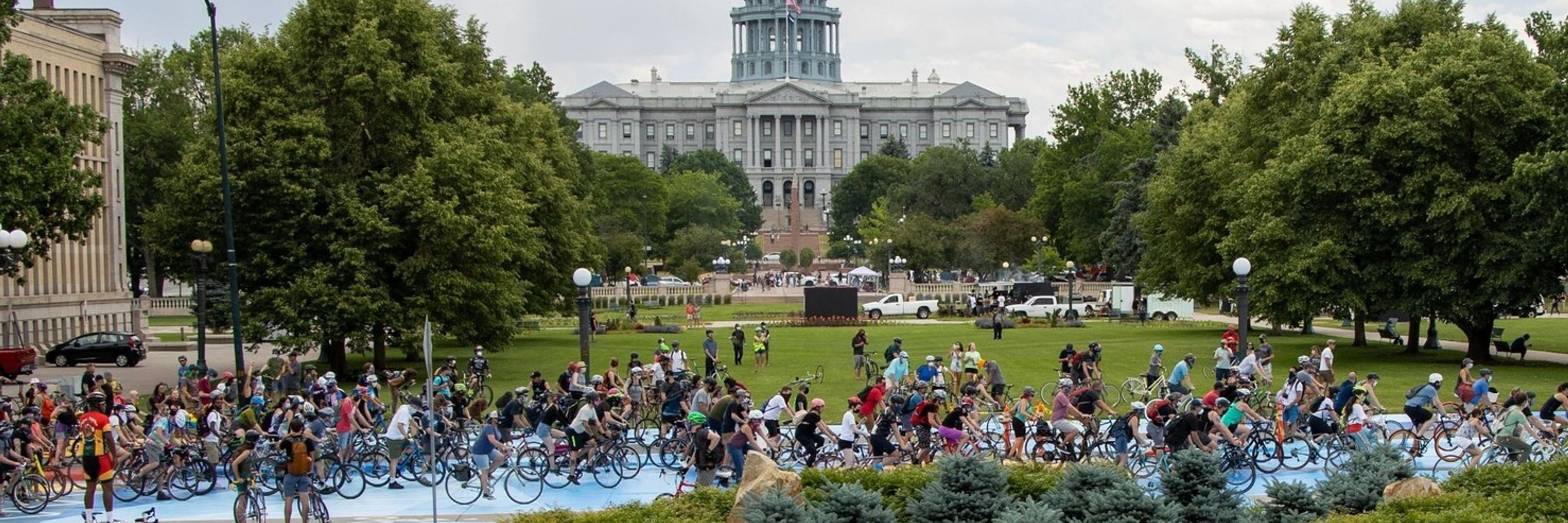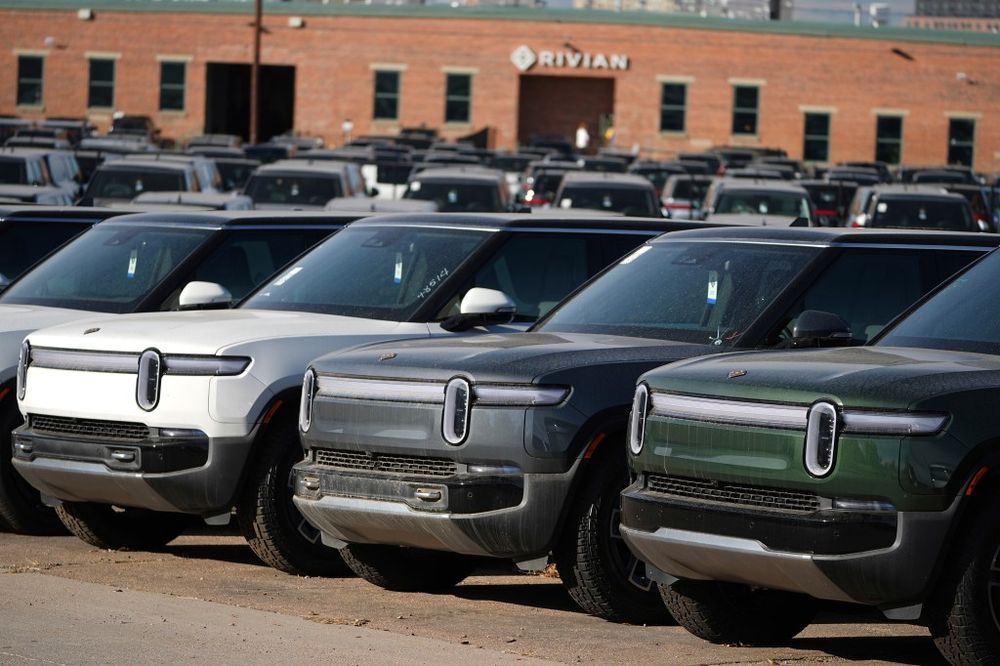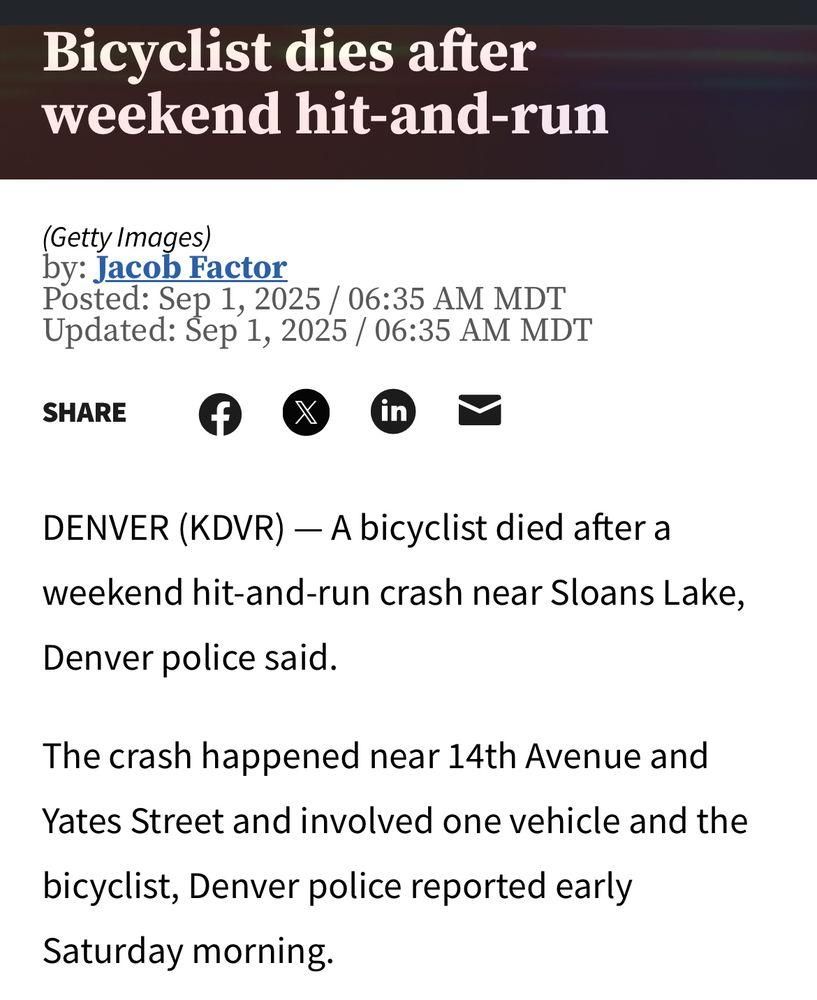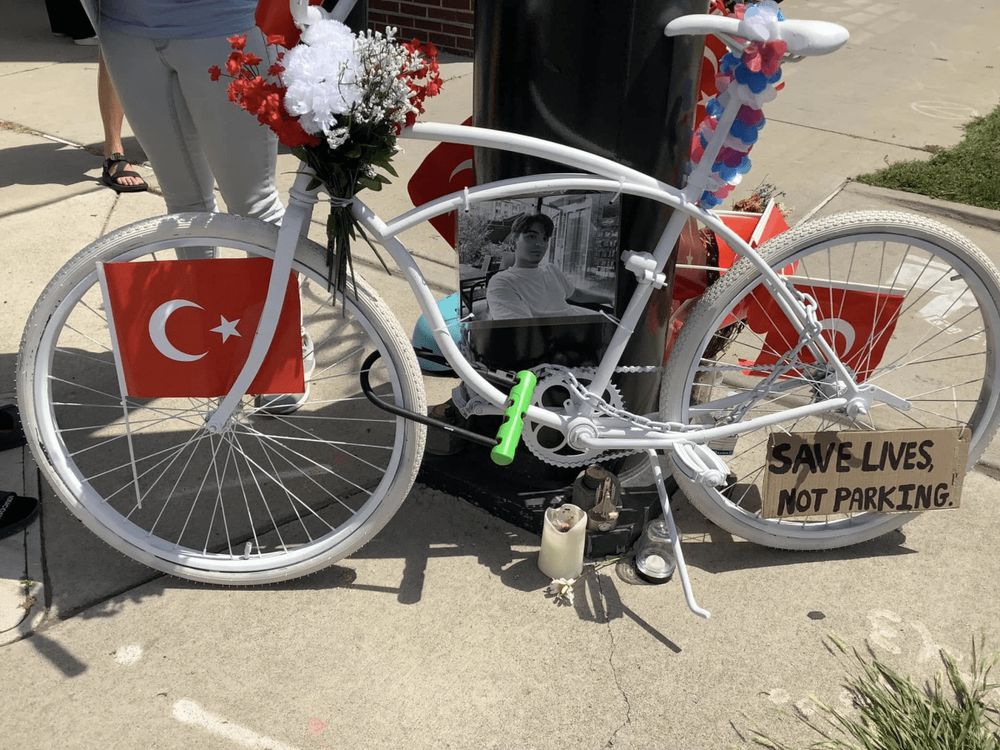## Overview:
Following cyclist Salih Koç's death, advocates believe the city should "put our money where our mouth is" to reduce bicycle accidents.
## Contribute to support local journalism today
As an independent publication, we rely on contributions from readers like you to fund our journalism. We’ll never charge you to read any of our stories, so if you think that we provide you with value please consider a small contribution today.
One-time Monthly Annually
One-time
$25
$50
$100
Other Donation amount
$
Monthly
$10
$20
$50
Other Donation amount per month
$
Annually
$125
$250
$500
Other Donation amount per year
$
Thanks for your contribution!
Contribute Now
### Sign up for our free newsletters!
Join 2,500 of your neighbors and receive Bucket List’s trusted community news, events, and more directly to your inbox.
Sign up
### Subscribe to our free weekly newsletter.
Join 2,500 of your neighbors and receive Bucket List’s trusted community news, events, and more–directly to your inbox.
Sign up
On Jul. 21, Salih Koç, 21, was killed in a hit-and-run while biking at the intersection of 38th Ave. and Tejon St. The Turkish student was visiting the U.S. on a work-travel program; he had been in Denver for a little over a month when he was killed. Denver Police later arrested Jonathan Jarabeck in connection with the crash and are holding the 28-year-old on charges of leaving the scene of a crash involving death.
“For something like this to happen to a 21-year-old, that is definitely devastating,” said Neşe Şahin, a member of the Turkish American Cultural Society of Colorado. Şahin, who first came to the U.S. from Turkey as a student in 1997, now helps Turkish students adjust to life in the U.S. Though she didn’t know Koç personally, she knew of him from her work with TACSCO. “All these kids who come to us are like my own kids to me because I do have a 23-year-old and a 19-year-old. They have a lot of hopes, dreams.”
Led by the Denver Bike Lobby, Northwest Denver residents, fellow bicyclists and members of Denver’s Turkish community gathered on Aug. 2 to remember Koç and install a “ghost bike,” a bicycle painted white and decorated with Turkish flags and photos of Koç, at the intersection where the engineering student was killed.
On August 2, Denver’s Turkish community gathered to remember Salih Koç and install a “ghost bike.” Photo by David Chen.
For one bicyclist who attended Saturday’s vigil, Koç’s death hit particularly close to home.
**“** Clearly, the community cared. The atmosphere within the physical people present was one of mourning but also togetherness,” said Adrienne Razavi, who works with Denver Streets Partnership. “But the backdrop of the corner of this intersection, where traffic was speeding by and it was loud and the stain of the blood was still in the intersection, that backdrop was almost…what’s the word? It was painful.”
Koç’s death made Razavi think of her partner, Thom, who was seriously injured in a hit-and-run in Aurora in February. Thom, she said, lost five teeth, broke a bone on the inside of his nose and suffered a severe concussion. He doesn’t remember anything from that day and is still recovering after undergoing several intensive dental surgeries.
“He’ll have to deal with the loss of his teeth for the rest of his life, and there’s just nothing to be done about it,” Razavi said. “It’s clearly very impactful for me, but I’m aware that this is the ‘good’ result. It made me think about how lucky we are that he is still with us.”
**A legacy of crashes**
That Koç was killed at this particular intersection, to some, wasn’t a surprise. After the City of Denver conducted a traffic study on Tejon St. and concluded that the road needed better infrastructure for biking safety in 2020, DOTI planned to install a protected bike lane stretching from Central to 46th. However, the agency later abandoned the plan due to parking concerns from businesses, promising to look into “alternative designs on Tejon or an alternative alignment” on N. Shoshone St. or Quivas St. in a public meeting in 2021.
## Contribute to Our Back to School Fundraising Campaign!
From August 17–31, Bucket List Community Cafe is rallying to raise over $5,000 so our team of aspiring journalists can continue covering the news that matters to you, while building the skills they need to succeed. We need your help to keep going. Please contribute today so our team has the tools, resources and encouragement needed to start the school year strong and build community by sharing our stories.
One-time Monthly Annually
One-time
$25
$50
$100
Other Donation amount
$
Monthly
$10
$20
$50
Other Donation amount per month
$
Annually
$125
$250
$500
Other Donation amount per year
$
Your contribution is appreciated.
Donate Now
## Subscribe to our free, weekly newsletter.
Join 2,500 of your neighbors and receive Bucket List's trusted community news, events, and more–directly to your inbox.
Sign up
“We also understand that bicyclists really need a safe and comfortable north-south connection in this area,” City Planner Paige Colton told attendees at the April meeting. “We’d like to provide a high-comfort bike lane in this area (and) Shoshone or Quivas could be the way to do it.”
Colton then told attendees that the city would collect data, conduct engineering analysis and engage stakeholders in the fall and winter of 2021 with the goal of beginning construction in late 2022; however, that never happened. DOTI Director Amy Ford declined to comment for this story, and _Bucket List_ did not hear back from any other DOTI officials at the time of publication.
District 1 Councilwoman Amanda Sandoval declined to give a specific reason why the project has stalled for nearly five years. “There’s lots of promises that are made and lots of failed promises that (aren’t) followed through on,” she said.
Though she now says she never had a stance on the Tejon bike lane, Sandoval spoke at the April meeting in favor of small businesses. She also said she expected the biking community to “ridicule” her in public comment for doing so—right after saying she didn’t want to create an “us vs. them” between small businesses and bikers.
However, to many transit advocates, these words ring hollow, especially since Colton specifically mentioned the dangers of 38th Ave.—where Koç was killed—during the 2021 meeting. “We really need to evaluate the intersection at W. 38th Ave,” she said. “It’s a big street that’s hard to cross, and we gotta figure that out.”
The city has identified the intersection at W. 38th Ave. as dangerous, but no action has been taken. Photo by Cassis Tingley.
Bike commuter and Highlands resident Ben Shpurker says the cruel irony of the city’s foresight and lack of action was “beyond frustrating.”
“The city had identified that these are dangerous places,” Shpurker said. “This street, the amount of vehicles that go up and down it (and) the speed at which they’re going warrants more safety for cyclists. We saw that. The science is there; it was even brought up. And then our elected officials allowed themselves to prioritize silly things like parking over, now, someone’s life.”
Shpurker, who was appointed as Bike Mayor of Denver earlier this year, commutes to Boulder for work using his bike and the Flatiron Flyer bus. He’s lived in Denver for eight years and still doesn’t own a car—though he continues to bike, he said Koç’s death and the general threat of traffic violence linger in the back of his mind.
“It’s always a stark reminder that the way I go around Denver, the way that I see and experience the city, is so vulnerable and it could be gone like that. And it’s terrifying,” Shpurker said. “When there isn’t physical infrastructure between me and vehicles, anytime I hear something coming up from behind me, it’s a, you know, double, triple, quadruple look over my shoulder.”
Shpurker has good reason to be on high alert. So far, 43 people have been killed in traffic-related crashes in Denver this year. Koç was the third bicyclist killed by a driver, outpacing last year’s figure of two biker deaths. Since DOTI began collecting traffic violence data in 2013, between one and six bicyclists have been killed on Denver streets every year.
**So what is the city doing?**
In an effort to address Denver’s traffic safety issues, DOTI established the Denver Moves Everyone 2050 strategic plan last year. DME outlines specific recommendations for transit and infrastructure policy and programming with the overarching goal of equitably improving mobility. In 2024, DOTI passed policies promising to prioritize safe street design and people, diversify transit options and consider sustainability. But Razavi says that ideas are not the same as action.
“There’s a lot of conversation. Denver has really great plans for improving transportation (and) we have a really solid vision of what it would take,” Razavi said, referencing the DME and Vision Zero concepts. “But in terms of what can be done, we need to put our money where our mouth is. This is a funding problem more than it is a vision problem.”
One key example of this, she says, is the Vibrant Denver Bond, a $950 million infrastructure investment package passed by the Denver City Council on Aug. 5. The last bond, passed in 2017, included $18 million for bikeways, allowing DOTI to implement at least 125 miles of new bike lanes across the city.
This time, despite campaign promises from Mayor Mike Johnston to “build more high-comfort, dedicated bike lanes,” there is no funding allocated for bike lanes, though some construction projects say they will benefit bicyclists via improvements to signal timing and sidewalk repairs.
Razavi called the bond’s lack of funding for bike infrastructure “a real disappointment,” noting that the Connectivity Subcommittee, which gave mobility recommendations to the city council during the bond review process, had also recommended more bike lanes.
“Having more things like bus lanes and protected bike lanes on streets makes those streets safer for everyone, including people and vehicles,” Razavi said. “We’re generally pleased that some of the recommendations from the Connectivity Subcommittee did make it on the list, but definitely really disappointed by how little is in there for bike infrastructure despite mayoral campaign promises.”
The bond, which does include infrastructure improvements along 13th and 14th Ave., 38th Ave. and the 38th and Blake Underpass, will go before Denver voters in November.
**Broadening our transit horizons**
In the absence of city funding for improved bike infrastructure, Razavi hopes change can start at the grassroots level.
“I think it’s a culture change,” she said. “Denver has had decades to build a very car-centric city. And so a lot of folks drive, and they don’t see a possibility where they could get around without driving because of the sprawl, because of the road network, but also because the road is dangerous (and) transit isn’t very convenient.”
Razavi thought that if more people tried biking, they’d be more open to seriously investing in biking infrastructure. She also acknowledged that it was hard to tell others to try something she knows, personally and through her work with the Denver Streets Partnership, to be dangerous.
Another “ghost bike” installed just a few blocks from where Salih Koç was killed. Photo by Cassis Tingley.
This was echoed by Shpurker. “I would say the best way to advocate for bikes is to ride your bike and to be seen on your bike,” the longtime bike commuter said, adding, “Of course, you’re always dealing with the potential of not being seen on your bike.”
A tide shift in Denver’s transit culture, if it is coming, will have been too late for Koç. Following his death, Şahin said the young man’s body was returned to Turkey at the request of his family. Two of Koç’s close friends, also visiting the U.S. from Turkey, went with him; they were too devastated to stay, she said.
“Unfortunately, this is definitely not the first death to come from traffic violence,” Şahin reflected. “I think the city definitely has a lot of work to do in terms of making its roads safer for everyone and not just for cars and for drivers.”
### _Related_













